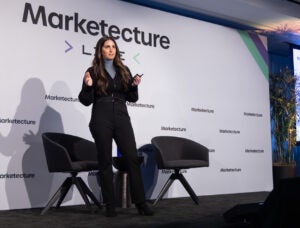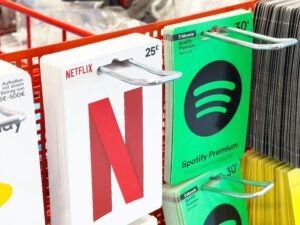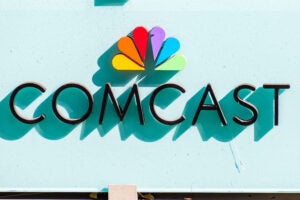 If your favorite stars are in the digital advertising technology world (and why wouldn’t they be?), then last week’s Digital Media Summit in New York City was a star-studded affair. Co-produced by LUMA Partners and MediaLink, several hundred attendees came together to hob nob and put their best foot forward to potential acquirers or their intermediaries. In addition, attendees could choose from a smorgasbord of compelling panels throughout the day.
If your favorite stars are in the digital advertising technology world (and why wouldn’t they be?), then last week’s Digital Media Summit in New York City was a star-studded affair. Co-produced by LUMA Partners and MediaLink, several hundred attendees came together to hob nob and put their best foot forward to potential acquirers or their intermediaries. In addition, attendees could choose from a smorgasbord of compelling panels throughout the day.
At the beginning of breakout sessions on Wednesday, one panel on big content and the state of news online offered some interesting insights in a discussion led by The Business Insider’s Henry Blogdget. Panel members included Federated Media’s John Battelle, Press+’s Gordon Crovitz (formerly of The Wall Street Journal) and The New York Times SVP of Digital Operations Martin Nisenholtz, who is also temporarily “riding herd” at About.com until a new CEO can be found.
Demand-side platforms, ad networks and exchanges were among the topics touched on and The Times’ Nisenholtz provided his big brand perspective on innovation in digital ads. Suffice it to say, content is still king from these publishers points-of-view -and they’re wary of the automation and innovation eating away at their businesses.
From the panel…
HENRY BLODGET: Aren’t we basically in a world where ad prices are going to go to zero? And aren’t we screwed as a result?
MARTIN NISENHOLTZ: No. I think we’re in a bifurcated world. I think we’re in a world where agencies and clients select a small handful of premium brands that they’re very interested in working with on a custom basis. And everything else goes to exchanges and networks. The agency and client world can’t tolerate tens of thousands or hundreds of thousands of inputs. So your point, which is John [Battelle]’s point before.
So [even though] Facebook has poured all of this inventory on the marketplace, the Times website has gotten stronger. And I think the reason it’s gotten stronger is because the agencies are overwhelmed with choice. And you know, they’re basically saying we’re going to pick, ESPN and so on… There are just a handful of great brands out there that they need to be associated with.
So that, and some of them are negative brands. Your brand may be one of them or in some cases qualify. I mean, it’s a very edgy brand obviously. It doesn’t have to be an old line brand. But it’s a short list. It has to have scalability, audience, environment. All sorts of flexibility, innovation, in terms of what you’re doing on the advertising side. What you’ll allow.
It really started, by the way, when Apple broke on our website with the PC versus Mac campaign. That was the first great piece of internet advertising that was totally consistent offline to online. Really witty, really funny. People loved it and it just created this sea change in the way that creative is now coming on our website.
HENRY BLODGET: Now if you listen to most ad network folks and exchanges and everything else, they’ll tell you content’s irrelevant. That this whole “oh what you’re next to, the context, the look and feel” is just what you’re selling. When in fact it doesn’t matter at all.
MARTIN NISENHOLTZ: I mean, they’re only right in one context. They’re right in the crudest direct response. If you don’t care whether your brand appears next to, I mean I could get as crude as you want, but I won’t because…
But I think at the end of the day even direct response advertisers should care. You’re a particular hot button for me right now. But putting that aside, look, I don’t think…
JOHN BATTELLE: DSP, DSP, DSP…[laughter]
MARTIN NISENHOLTZ: I don’t think it’s a zero sum game. I think exchanges and networks can be extremely useful parts of the ecosystem to achieve a lot of stuff that needs to get done on behalf of clients. But it’s not a zero sum game.
HENRY BLODGET: It’s not a zero sum game, but as we project forward, are more and more of the dollars going to go to DSPs? Because what I hear, every publisher wants to believe exactly what you’ve just said, and certainly everybody at an agency and so forth. You know, context really matters and so forth.
MARTIN NISENHOLTZ: Just look at our numbers. Look at our advertising growth rates at the New York Times website. Look at our second quarter. I’m not making this up. It’s in the numbers. Now when the numbers change, then I may change my…[laughter] But right now…
And that’s the question in the years to come.. if audience buying continues its trajectory in digital (today’s DSP-model buying world), how will sites like the New York Times need to adjust, let alone survive? From the publisher’s perspective, certainly the custom advertising efforts is a cornerstone as is the digital subscription or paywall plan.
Unique and valuable audience is best.
By John Ebbert













